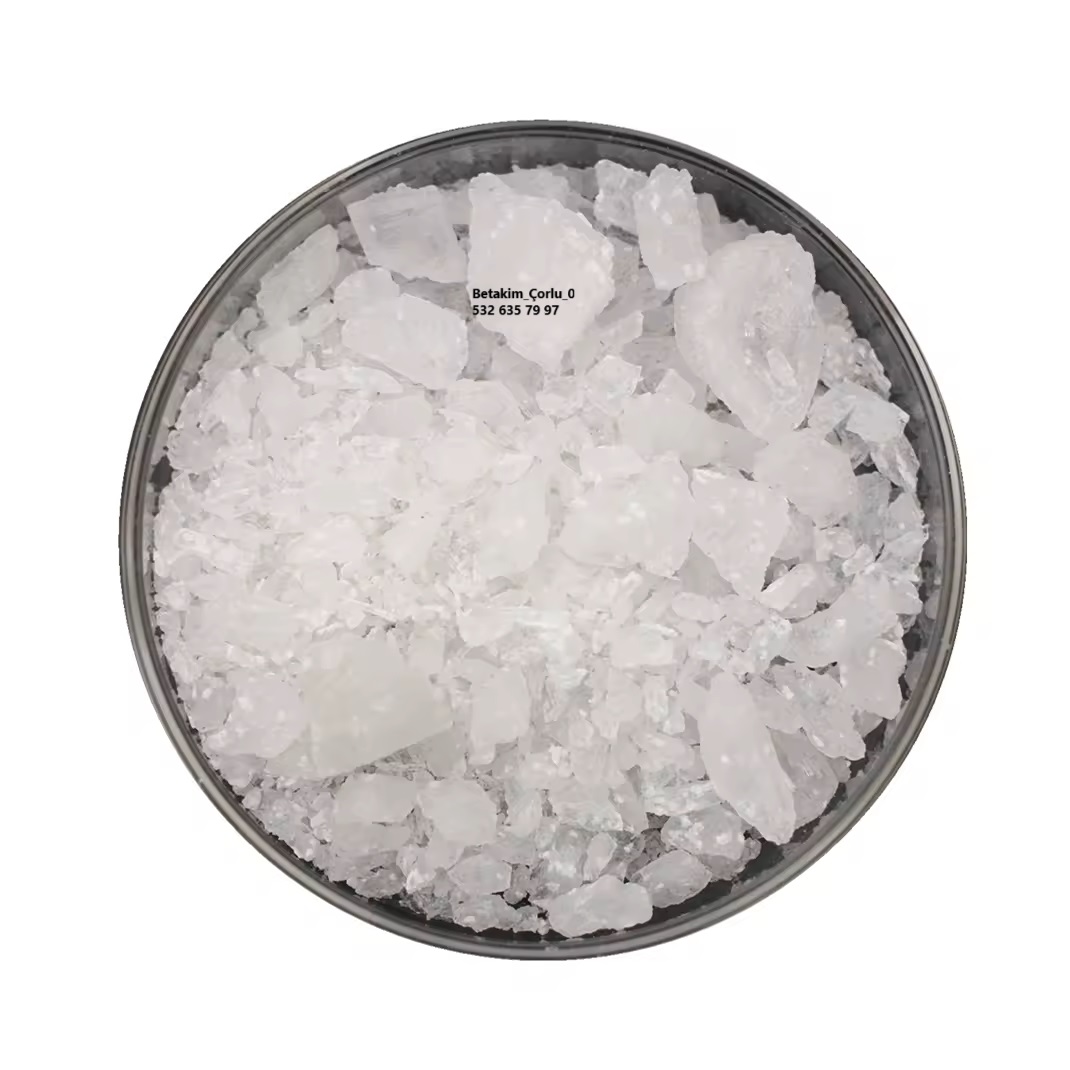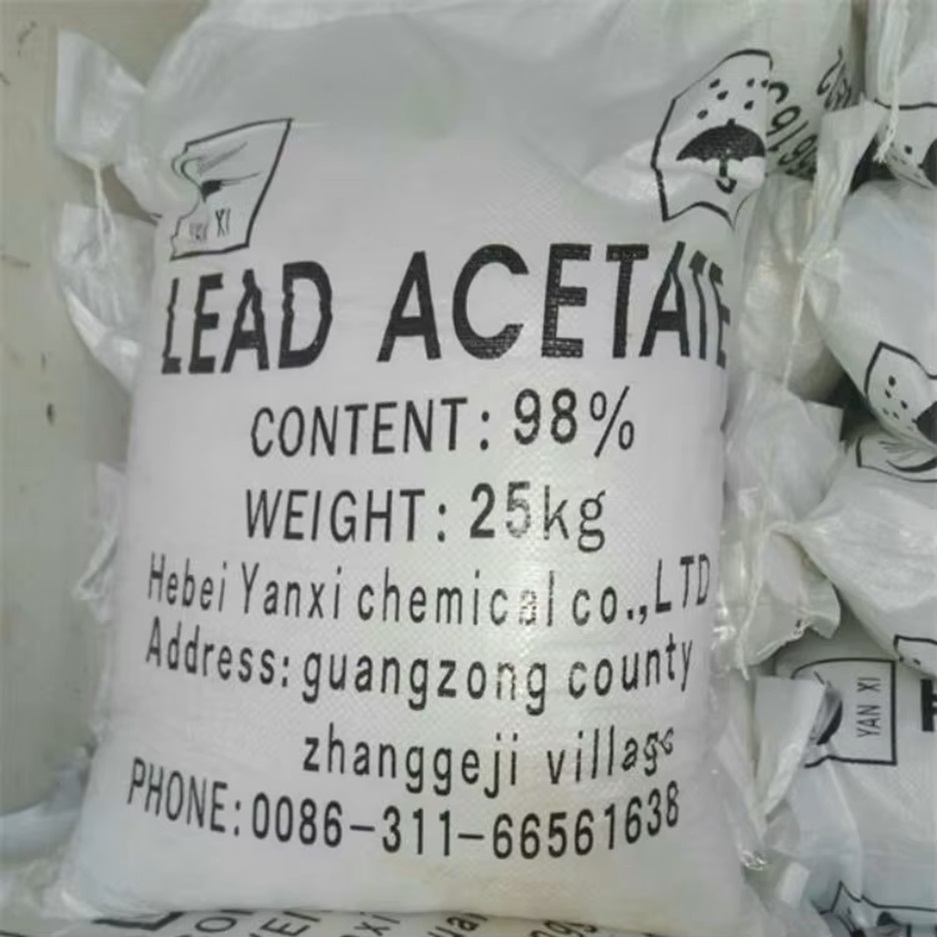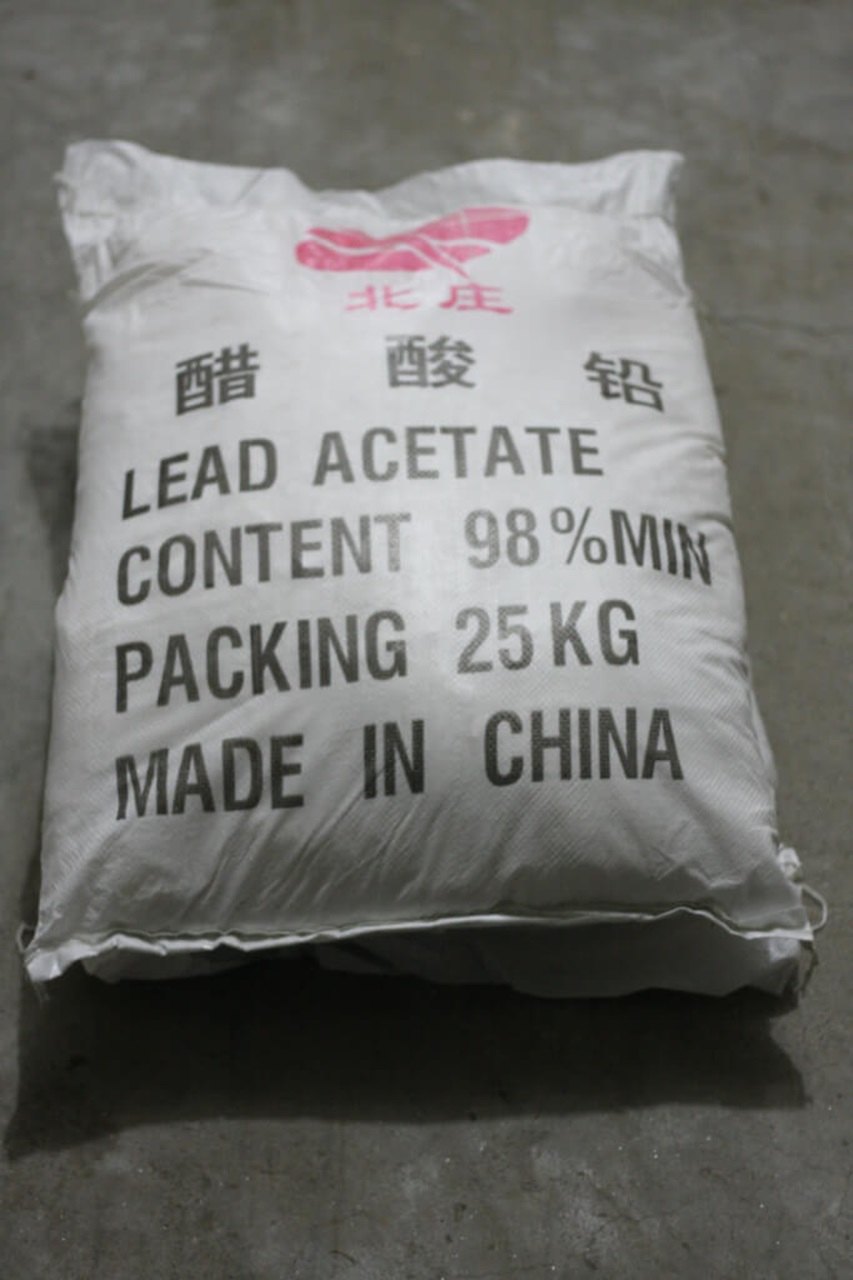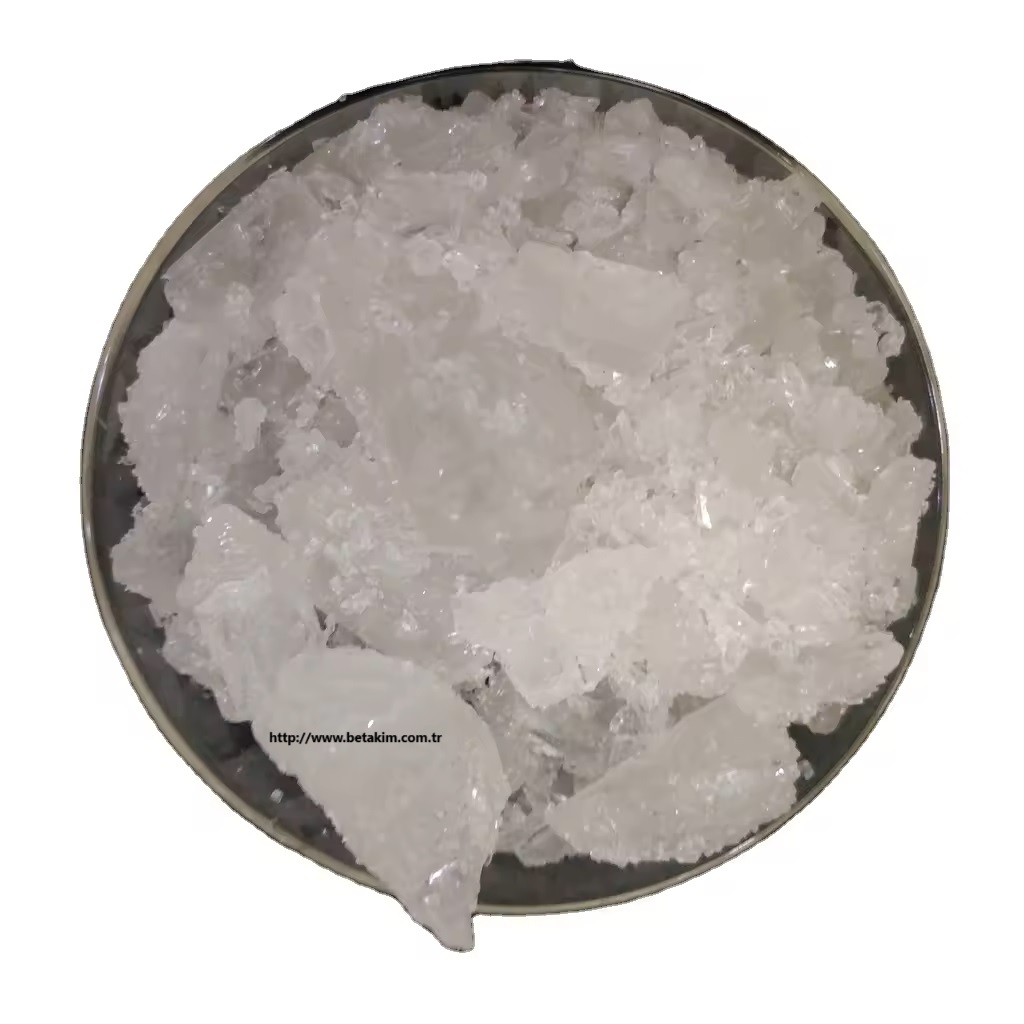We unleash your business potential by maximize the business innovation.
Send EmailLead Acetate, Lead Acetate Trihydrate, Lead Acetate Hydrate, Lead Acetate Trihydrate, Lead diacetate, Sugar of Lead, Plumbous Acetate, Goulard's Powder, Lead acetate Anhydrous, 6080-56-4, 301-04-2, 612-031-2
The CAS numbers 6080-56-4, 301-04-2, and 612-031-2 all correspond to different forms of Lead(II) acetate:
-
6080-56-4: Lead(II) acetate trihydrate
-
301-04-2: Lead(II) acetate (anhydrous)
-
612-031-2: Lead(II) acetate trihydrate
The CAS number 301-04-2 corresponds to Lead(II) acetate. This compound is commonly used in various industrial and laboratory applications, including:
-
Chemical Analysis: Used as a reagent.
-
Pigment Production: Utilized in the manufacture of certain pigments.
-
Leather Processing: Employed in the dyeing and tanning of leather.
-
Medical Applications: Used in some medical treatments, though it is toxic and must be handled with care.
The CAS number 6080-56-4 corresponds to Lead(II) acetate trihydrate. This compound is commonly used in various industrial and laboratory applications, including:
-
Chemical Analysis: Used as a reagent.
-
Pigment Production: Utilized in the manufacture of certain pigments.
-
Leather Processing: Employed in the dyeing and tanning of leather.
-
Medical Applications: Used in some medical treatments, though it is toxic and must be handled with care
Lead acetate, with the chemical formula Pb(C2H3O2)2, is a lead salt that typically appears as white or colorless crystals and is soluble in water. Here are some key properties and uses of lead acetate:
-
Chemical Formula: Pb(C2H3O2)2
-
Molecular Weight: 325.29 g/mol
-
Appearance: White or colorless crystals
-
Solubility: Soluble in water and glycerin
-
Density: Approximately 3.25 g/cm³
-
Boiling Point: Approximately 280°C
Applications:
-
Laboratory Uses: Employed in chemical analysis and the synthesis of reagents.
-
Paint and Pigment Production: Used in the manufacture of certain paints and pigments.
-
Leather Processing: Utilized in the dyeing and tanning of leather.
-
Medical Applications: Used in some medical applications, though it is toxic and must be handled with care.
Lead acetate is a toxic substance and should be used with caution.
Lead acetate is known by several other names, including:
-
Plumbous acetate
-
Sugar of Lead
-
Lead diacetate
-
Salt of Saturn
-
Goulard's powder
The CAS number 612-031-2 corresponds to Lead(II) acetate trihydrate2. This compound is commonly used in various industrial and laboratory applications, including:
-
Chemical Analysis: Used as a reagent.
-
Pigment Production: Utilized in the manufacture of certain pigments.
-
Leather Processing: Employed in the dyeing and tanning of leather.
-
Medical Applications: Used in some medical treatments, though it is toxic and must be handled with care.
Lead(II) acetate trihydrate
CAS: 6080-56-4
Molecular Formula: C4H12O7Pb
Names and Identifiers
| Name | Lead(II) acetate trihydrate |
| Synonyms | Lead acetate hydrate PLATINIZING SOLUTION lead acetate trihydrate Sugar of lead trihydrate PLATINIZING SOLUTION, ASTM Lead(Ⅱ) acetate trihydrate Lead(II)acetate trihydrate Lead Acetate Trihydrate BPC lead (ii) acetate 3-hydrate Lead(II) acetate trihydrate LEAD(II) ACETATE TRIHYDRATE, ACS acetic acid, lead salt, trihydrate LEAD ACETATE TRIHYDRATE ACS REAGENT LEAD ACETATE-3-HYDRATE R. G., REAG. ACS, REAG. ISO, REAG |
| CAS | 6080-56-4 |
| EINECS | 612-031-2 |
| InChI | InChI=1/2C2H4O2.3H2O.Pb/c2*1-2(3)4;;;;/h2*1H3,(H,3,4);3*1H2 |
| InChIKey | DYRQFRHCGBQJII-UHFFFAOYSA-M |
Physico-chemical Properties
| Molecular Formula | C4H12O7Pb |
| Molar Mass | 379.33 |
| Density | 2,55 g/cm3 |
| Melting Point | 75°C (dec.)(lit.) |
| Boling Point | 280°C |
| Flash Point | 40°C |
| Water Solubility | 625 g/L |
| Solubility | 443g/l |
| Vapor Presure | 13.9mmHg at 25°C |
| Appearance | Solid |
| Specific Gravity | 2.55 |
| Color | White or colorless, efflorescent |
| Exposure Limit | NIOSH: IDLH 100 mg/m3; TWA 0.050 mg/m3 |
| Merck | 14,5397 |
| BRN | 3730298 |
| PH | 5.5-6.5 (50g/l, H2O, 20℃) |
| Storage Condition | 2-8°C |
| Sensitive | 0: forms stable aqueous solutions |
| Physical and Chemical Properties | White crystalline or flaky powder, often large brown or gray in industrial form. melting point 75 ℃ (water loss) boiling point 280 ℃ relative density 2.50g/cm3 solubility soluble in water, slightly soluble in alcohol, soluble in glycerol. |
| Use | Used as pigment, stabilizer and catalyst |
Risk and Safety
| Risk Codes | R61 - May cause harm to the unborn child R33 - Danger of cumulative effects R48/22 - Harmful danger of serious damage to health by prolonged exposure if swallowed. R50/53 - Very toxic to aquatic organisms, may cause long-term adverse effects in the aquatic environment. R62 - Possible risk of impaired fertility |
| Safety Description | S53 - Avoid exposure - obtain special instructions before use. S45 - In case of accident or if you feel unwell, seek medical advice immediately (show the label whenever possible.) S60 - This material and its container must be disposed of as hazardous waste. S61 - Avoid release to the environment. Refer to special instructions / safety data sheets. |
| UN IDs | UN 1616 6.1/PG 3 |
| WGK Germany | 2 |
| RTECS | OF8050000 |
| TSCA | Yes |
| HS Code | 29152900 |
| Hazard Class | 6.1 |
| Packing Group | III |
| Toxicity | LD50 orally in Rabbit: 4665 mg/kg |
Upstream Downstream Industry
| Raw Materials | Acetic acid Acetic acid Lead Lead |
| Downstream Products | Lead isocaprylate Lead naphthenate Magentagreencrystals Lead(II) acetate basic Lead(II) oxide Lead (II) stearate |
Nature
colorless crystal or white powder. Slightly acetic acid. mp 60~62 C I d 2.55. Soluble in water, slightly soluble in alcohol, soluble in glycerol. lg the product is soluble in 1-6ml water, 0.5ml boiling water, 30ml ethanol, soluble in glycerol. After absorption of carbon dioxide in air, it becomes an insoluble basic carbonate. The acetic acid was lost at 100 °c and completely decomposed at 200 °c. Flammable in case of open flame and high heat. By high heat decomposition of toxic gases.
Use
Analytical reagents for the determination of sulfide, chromium trioxide, molybdenum trioxide, biological dyeing and organic synthesis.
Preparation Method
lead oxide was dissolved in hot acetic acid, and after filtration, acetic acid was added to the filtrate to react and evaporated to a relative density of 1-40. After cooling, the crystals were isolated and dried to obtain pure lead acetate.
Safety
mice were injected intravenously with LD50:174mg/kg. According to RTECS standard, it was suspicious for tumor. The maximum allowable concentration of harmful substances in the air of the workshop is 0. 05mg/m3. Staff should be protected and immediately rinsed with running water when touching eyes and skin. It is strictly prohibited to mix with acids, oxidants, food and food additives.
Reference Information
| introduction | lead acetate trihydrate is colorless crystal, white particles or powder, which will deliquesce. Easily soluble in water with sweet taste. Lead acetate trihydrate is used to make various lead salts, pigments, dyes, lead plating, polyester catalysts, waterproof paints, desiccants, pesticides and medicines. |
| safety information | lead acetate trihydrate rats were given LD50130mg/kg orally and 120 mg/kg intravenously. the metabolic symptoms after absorption in the body were the same as those of common inorganic lead compounds. The United Nations, the International Maritime Organization, the United States and the United Kingdom classify it as a toxic and dangerous substance, and there are corresponding regulations and restrictions when storing, transporting, packaging and treating as waste. |
| solubility in water (g/100ml) | dissolution grams per 100ml of water at different temperatures (℃): 19.8g/0 ℃;29.5g/10 ℃;44.3g/20 ℃;69.8g/30 ℃;116g/40 ℃ |
| use | used as pigment, stabilizer and catalyst this product can produce various lead salts, anti-fouling coatings, water quality protection agents, pigment fillers, paint desiccants, fiber dyes, and solvents in the cyanidation process of heavy metals. It is widely used in medicine, pesticides, dyes, coatings and other industrial production. It is also a reagent for the determination of chromium trioxide and molybdenum trioxide in chemical analysis. Used as an analytical reagent, also used in biological dyeing, organic synthesis and pharmaceutical industry |
| production method | lead oxide reacts with acetic acid. Dissolve lead oxide in 80% hot acetic acid until it is soaked, filter, add a small amount of acetic acid to the filtrate, and evaporate to a relative density of 1.40. Cool, filter, and dry to get lead acetate. The general purity of industrial lead acetate can reach above 98%. After purification, recrystallize with 1% acetic acid solution, or dissolve lead acetate trihydrate in water and pass hydrogen sulfide to precipitate lead sulfide and other impurities. After filtration, fluorescent gallium reagent (Co,Al,Cu, etc.) is added to the filtrate, a small amount of activated carbon is added, and EDTA sodium salt is added to obtain extremely pure reagent grade products. |
| category | toxic substances |
| toxicity classification | poisoning |
| acute toxicity | oral administration-rat LD50 4665 mg/kg; Abdominal cavity-mouse LD50: 174 mg/kg |
| flammability hazard characteristics | combustible, the fire site discharges lead-containing spicy and stimulating smoke |
| storage and transportation characteristics | warehouse low temperature, ventilation, drying |
| fire extinguishing agent | water, carbon dioxide, dry powder, foam |
| occupational standard | TWA 0.1 mg (lead)/m3 |



